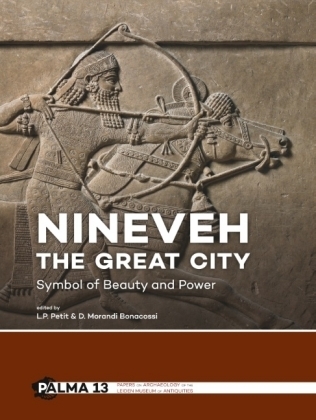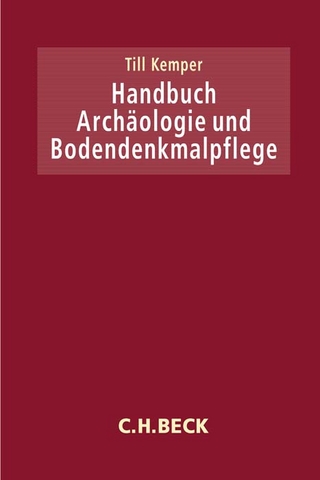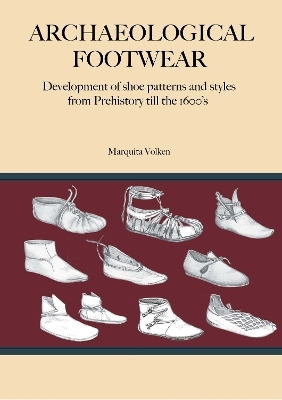
Nineveh, the Great City
Sidestone Press (Verlag)
978-90-8890-497-4 (ISBN)
‘Well, as for Nineveh, skipper, it was wiped out long ago. There’s not a trace of it left, and one can’t even guess where it was’ (Lucian, 2nd century AD).
Nineveh, the once-flourishing capital of the Assyrian Empire, has fascinated writers, travellers and historians alike since its complete annihilation by allied forces in 612 BC. It was said to have been a great and populous city with 90-km walls, stunning palaces and colossal statues of pure gold. Since 1842 archaeologists have been investigating the ruins of Nineveh, which are located on the eastern banks of the river Tigris, near the modern Iraqi city of Mosul. The hundreds of thousands of objects that have been collected tell an intriguing story of life and death in a remarkable Mesopotamian city.
The edited volume Nineveh, the Great City contains more than 65 articles by international specialists, providing the reader with a detailed and thorough study of the site of Nineveh. It describes the history of the city, the excavations and the dispersed material culture that can today be appreciated in more than 100 museums and institutes around the world. Special attention is paid to the endangered heritage of Nineveh, which recently faced destruction for the second time in its history.
This lavishly illustrated volume is intended to appeal to readers interested in culture and heritage, as well as to students and professional academics.
Dr. Lucas Petit is curator of the Near Eastern department of the Dutch National Museum of Antiquities. He has held positions at the Johann Wolfgang Goethe-Universität Frankfurt am Main and at Leiden University. In recent decades he has been involved in various archaeological fieldwork projects in Europe, Africa and the Middle East. He is currently co-directing the renewed excavations at Tell Damiyah in Jordan. He has written and edited several volumes, including Oursi hu-beero, Het Nabije Oosten, Settlement Dynamics in the Middle Jordan Valley and A Timeless Vale. Prof. dr. Daniele Morandi Bonacossi is Professor of Near Eastern Archaeology at the University of Udine. He was previously a research fellow at the Free University of Berlin and the University of Munich. He has directed and participated in many archaeological excavations and surveys in various sites and regions in the Near East (Syria, Oman, Yemen and Iraq). He is currently directing the Land of Nineveh Archaeological Project in the Kurdistan Region of Iraq and a training project for Iraqi professionals specializing in the conservation and management of archaeological heritage. He has written and edited several volumes, including Settlement Dynamics and Human-Landscape Interaction in the Dry Steppes of Syria, Urban and Natural Landscapes of an Ancient Syrian Capital and Tra il fiume e la steppa.
Preface
Introduction
Part I: Nineveh, Famous but Lost
1: Nineveh, Famous but Lost (Daniele Morandi Bonacossi)
2: Nineveh in the Cuneiform Sources (John MacGinnis)
3: Nineveh in Biblical, Ancient Jewish and the Earliest Christian Traditions (Jürgen Zangenberg)
4: Nineveh in Classical Literature (Menko Vlaardingerbroek)
5: Nineveh in Western Art (Jan de Hond)
6: Early Travellers and Nineveh (Paolo Matthiae)
Part II: Investigating Nineveh:a Great Adventure
7: Investigating Nineveh: a Great Adventure (Lucas P. Petit)
8: The Topography of Nineveh (Jason Ur)
9: French Research at Nineveh (Ariane Thomas)
10: The British Museum Excavations at Nineveh (John Curtis)
11: Austen Henry Layard (Frederick Mario Fales)
12: The Curse of the Tigris River (Lucas P. Petit)
13: Archaeology, Politics and Espionage (Frederick Mario Fales)
14: Max Mallowan and Agatha Christie Mallowan in Nineveh (David Stronach)
15: Gertrude Bell and the Monuments of Nineveh (Lisa Cooper)
16: Iraqi Excavations at Nineveh (John MacGinnis)
17: The Nergal Gate: a Calamitous History (Layla Salih)
18: Italian Research in the Nineveh Region: Archaeological Investigation and Cultural Heritage Protection and Management (Daniele Morandi Bonacossi)
Part III: From Prehistory to the Arrival of the Neo-Assyrian Kings
19: From Prehistory to the Arrival of the Neo-Assyrian Kings (Daniele Morandi Bonacossi)
20: The Prehistoric Roots of Nineveh (Marco Iamoni)
21: The Ninevite 5 Culture at Nineveh (Elena Rova)
22: Nineveh in the Second Millennium BC: the Birth of an Assyrian City (Aline Tenu)
Part IV: Neo-Assyrian Nineveh: the Largest City in the World
23: Neo-Assyrian Nineveh: the Largest City in the World (Lucas P. Petit& Daniele Morandi Bonacossi)
24: Neo-Assyrian Town Planning (Mirko Novák)
25: Water for Assyria: Irrigation and Water Management in the Assyrian Empire (Daniele Morandi Bonacossi)
26: The Rural Landscape of Nineveh (Daniele Morandi Bonacossi)
27: The Neo-Assyrian Kings in Nineveh (Bradley J. Parker)
28: The Palaces of Nineveh (David Kertai)
29: The Production and Use of Reliefs (Paolo Matthiae)
30: Sennacherib’s Quarries and the Stones of the Southwest Palace Decoration (Pier Luigi Bianchetti)
31: (De)colouring Ancient Nineveh using Portable XRF Equipment (Dennis Braekmans and Joris Dik)
32: Nineveh in the Assyrian Reliefs (Davide Nadali)
33: Nineveh and Neo-Assyrian Trade: an Active Hub with Far-Flung Contacts (Diederik J.W. Meijer)
34: Nineveh and Foreign Politics (Giovanni-Battista Lanfranchi)
35: Sennacherib (Carlo Lippolis)
36: Sennacherib’s Nineveh and the Staging of Atmosphere (Stephen Lumsden)
37: Sennacherib’s Palace Garden at Nineveh, a World Wonder (Stephanie Dalley)
38: The Lachish Reliefs (David Ussishkin)
39: Ashurbanipal and the Lion Hunt Reliefs (Pauline Albenda)
40: Language and Writing in Nineveh (Jan Gerrit Dercksen)
41: Intellectual Life in Nineveh (Eckart Frahm)
42: The Library of Ashurbanipal (Jeanette C. Fincke)
43: Aramaic Epigraphs in Nineveh (Frederick Mario Fales)
44: Demons, Deities and Religion (Barbara N. Porter)
45: Ištar of Nineveh (John MacGinnis)
46: Apotropaic Figures in Nineveh (Carolyn Nakamura)
47: Music in Nineveh (Theo J.H. Krispijn)
48: Notes on the Halzi Gate at Nineveh (David Stronach)
49: The Sack of Nineveh in 612 BC (Marc Van De Mieroop)
Part V: Nineveh after the Destruction in 612 BC
50: Nineveh after the Destruction in 612 BC (Daniele Morandi Bonacossi)
51: Nineveh in the Achaemenid Period (John Curtis)
52: Graeco-Parthian Nineveh (Rocco Palermo)
53: Nineveh and the City of Mosul (Hikmat Basheer Al-Aswad)
54: Monitoring Damage to Iraqi Archaeological and Cultural Heritage: the Case of Nineveh (A. Bianchi, S. Berlioz, E. Dalla Longa, D. Vicenzutti and M. Vidale)
55: Deir Mar Behnam: The Destruction of Iraq’s Christian Heritage (Bas Lafleur)
56: Rekrei: Crowdsourcing Lost Heritage (Matthew Vincent& Chance Coughenour)
57: Building a 3D Reproduction of the Southwest Palace of Sennacherib (Boris Lenseigne and Naphur van Apeldoorn)
Part VI: The Material Culture of Nineveh
58: The Material Culture of Nineveh (Lucas P. Petit)
59: The Material Culture of Nineveh in France (Ariane Thomas)
60: The Material Culture of Nineveh in Italian Collections (Daniele Morandi Bonacossi)
61: Nineveh in the United Kingdom (Paul Collins)
62: Nineveh in Berlin (Lutz Martin)
63: The Material Culture of Nineveh in Belgium and the Netherlands (Lucas P. Petit& Bruno Overlaet)
64: The Material Culture of Nineveh in Collections in the United States (Michael Seymour)
65: Nineveh, Lady Charlotte Guest and The Metropolitan Museum of Art (Yelena Rakic)
66: The Iraq Museum in Baghdad (Carlo Lippolis)
67: The Material Culture of Nineveh in Turkish Collections (A. Tuba Ökse, Zeynep Kiziltan and Gülcay Yağcı)
Abbreviations
References
Concordance of Museums and Registration Numbers
Index
‘Well, as for Nineveh, skipper, it was wiped out long ago. There’s not a trace of it left, and one can’t even guess where it was’ (Lucian, 2nd century AD).
Nineveh, the once-flourishing capital of the Assyrian Empire, has fascinated writers, travellers and historians alike since its complete annihilation by allied forces in 612 BC. It was said to have been a great and populous city with 90-km walls, stunning palaces and colossal statues of pure gold. Since 1842 archaeologists have been investigating the ruins of Nineveh, which are located on the eastern banks of the river Tigris, near the modern Iraqi city of Mosul. The hundreds of thousands of objects that have been collected tell an intriguing story of life and death in a remarkable Mesopotamian city.
The edited volume Nineveh, the Great City contains more than 65 articles by international specialists, providing the reader with a detailed and thorough study of the site of Nineveh. It describes the history of the city, the excavations and the dispersed material culture that can today be appreciated in more than 100 museums and institutes around the world. Special attention is paid to the endangered heritage of Nineveh, which recently faced destruction for the second time in its history.
This lavishly illustrated volume is intended to appeal to readers interested in culture and heritage, as well as to students and professional academics.
Contents:
Preface
Introduction
Part I: Nineveh, Famous but Lost
1: Nineveh, Famous but Lost (Daniele Morandi Bonacossi)
2: Nineveh in the Cuneiform Sources (John MacGinnis)
3: Nineveh in Biblical, Ancient Jewish and the Earliest Christian Traditions (Jürgen Zangenberg)
4: Nineveh in Classical Literature (Menko Vlaardingerbroek)
5: Nineveh in Western Art (Jan de Hond)
6: Early Travellers and Nineveh (Paolo Matthiae)
Part II: Investigating Nineveh:a Great Adventure
7: Investigating Nineveh: a Great Adventure (Lucas P. Petit)
8: The Topography of Nineveh (Jason Ur)
9: French Research at Nineveh (Ariane Thomas)
10: The British Museum Excavations at Nineveh (John Curtis)
11: Austen Henry Layard (Frederick Mario Fales)
12: The Curse of the Tigris River (Lucas P. Petit)
13: Archaeology, Politics and Espionage (Frederick Mario Fales)
14: Max Mallowan and Agatha Christie Mallowan in Nineveh (David Stronach)
15: Gertrude Bell and the Monuments of Nineveh (Lisa Cooper)
16: Iraqi Excavations at Nineveh (John MacGinnis)
17: The Nergal Gate: a Calamitous History (Layla Salih)
18: Italian Research in the Nineveh Region: Archaeological Investigation and Cultural Heritage Protection and Management (Daniele Morandi Bonacossi)
Part III: From Prehistory to the Arrival of the Neo-Assyrian Kings
19: From Prehistory to the Arrival of the Neo-Assyrian Kings (Daniele Morandi Bonacossi)
20: The Prehistoric Roots of Nineveh (Marco Iamoni)
21: The Ninevite 5 Culture at Nineveh (Elena Rova)
22: Nineveh in the Second Millennium BC: the Birth of an Assyrian City (Aline Tenu)
Part IV: Neo-Assyrian Nineveh: the Largest City in the World
23: Neo-Assyrian Nineveh: the Largest City in the World (Lucas P. Petit& Daniele Morandi Bonacossi)
24: Neo-Assyrian Town Planning (Mirko Novák)
25: Water for Assyria: Irrigation and Water Management in the Assyrian Empire (Daniele Morandi Bonacossi)
26: The Rural Landscape of Nineveh (Daniele Morandi Bonacossi)
27: The Neo-Assyrian Kings in Nineveh (Bradley J. Parker)
28: The Palaces of Nineveh (David Kertai)
29: The Production and Use of Reliefs (Paolo Matthiae)
30: Sennacherib’s Quarries and the Stones of the Southwest Palace Decoration (Pier Luigi Bianchetti)
31: (De)colouring Ancient Nineveh using Portable XRF Equipment (Dennis Braekmans and Joris Dik)
32: Nineveh in the Assyrian Reliefs (Davide Nadali)
33: Nineveh and Neo-Assyrian Trade: an Active Hub with Far-Flung Contacts (Diederik J.W. Meijer)
34: Nineveh and Foreign Politics (Giovanni-Battista Lanfranchi)
35: Sennacherib (Carlo Lippolis)
36: Sennacherib’s Nineveh and the Staging of Atmosphere (Stephen Lumsden)
37: Sennacherib’s Palace Garden at Nineveh, a World Wonder (Stephanie Dalley)
38: The Lachish Reliefs (David Ussishkin)
39: Ashurbanipal and the Lion Hunt Reliefs (Pauline Albenda)
40: Language and Writing in Nineveh (Jan Gerrit Dercksen)
41: Intellectual Life in Nineveh (Eckart Frahm)
42: The Library of Ashurbanipal (Jeanette C. Fincke)
43: Aramaic Epigraphs in Nineveh (Frederick Mario Fales)
44: Demons, Deities and Religion (Barbara N. Porter)
45: Ištar of Nineveh (John MacGinnis)
46: Apotropaic Figures in Nineveh (Carolyn Nakamura)
47: Music in Nineveh (Theo J.H. Krispijn)
48: Notes on the Halzi Gate at Nineveh (David Stronach)
49: The Sack of Nineveh in 612 BC (Marc Van De Mieroop)
Part V: Nineveh after the Destruction in 612 BC
50: Nineveh after the Destruction in 612 BC (Daniele Morandi Bonacossi)
51: Nineveh in the Achaemenid Period (John Curtis)
52: Graeco-Parthian Nineveh (Rocco Palermo)
53: Nineveh and the City of Mosul (Hikmat Basheer Al-Aswad)
54: Monitoring Damage to Iraqi Archaeological and Cultural Heritage: the Case of Nineveh (A. Bianchi, S. Berlioz, E. Dalla Longa, D. Vicenzutti and M. Vidale)
55: Deir Mar Behnam: The Destruction of Iraq’s Christian Heritage (Bas Lafleur)
56: Rekrei: Crowdsourcing Lost Heritage (Matthew Vincent& Chance Coughenour)
57: Building a 3D Reproduction of the Southwest Palace of Sennacherib (Boris Lenseigne and Naphur van Apeldoorn)
Part VI: The Material Culture of Nineveh
58: The Material Culture of Nineveh (Lucas P. Petit)
59: The Material Culture of Nineveh in France (Ariane Thomas)
60: The Material Culture of Nineveh in Italian Collections (Daniele Morandi Bonacossi)
61: Nineveh in the United Kingdom (Paul Collins)
62: Nineveh in Berlin (Lutz Martin)
63: The Material Culture of Nineveh in Belgium and the Netherlands (Lucas P. Petit& Bruno Overlaet)
64: The Material Culture of Nineveh in Collections in the United States (Michael Seymour)
65: Nineveh, Lady Charlotte Guest and The Metropolitan Museum of Art (Yelena Rakic)
66: The Iraq Museum in Baghdad (Carlo Lippolis)
67: The Material Culture of Nineveh in Turkish Collections (A. Tuba Ökse, Zeynep Kiziltan and Gülcay Yağcı)
Abbreviations
References
Concordance of Museums and Registration Numbers
Index
| Erscheinungsdatum | 16.11.2017 |
|---|---|
| Reihe/Serie | Papers on Archaeology of the Leiden Museum of Antiquities ; 13 |
| Zusatzinfo | 110fc / 140bw |
| Verlagsort | Leiden |
| Sprache | englisch |
| Maße | 210 x 280 mm |
| Themenwelt | Geisteswissenschaften ► Archäologie |
| ISBN-10 | 90-8890-497-9 / 9088904979 |
| ISBN-13 | 978-90-8890-497-4 / 9789088904974 |
| Zustand | Neuware |
| Haben Sie eine Frage zum Produkt? |
aus dem Bereich


